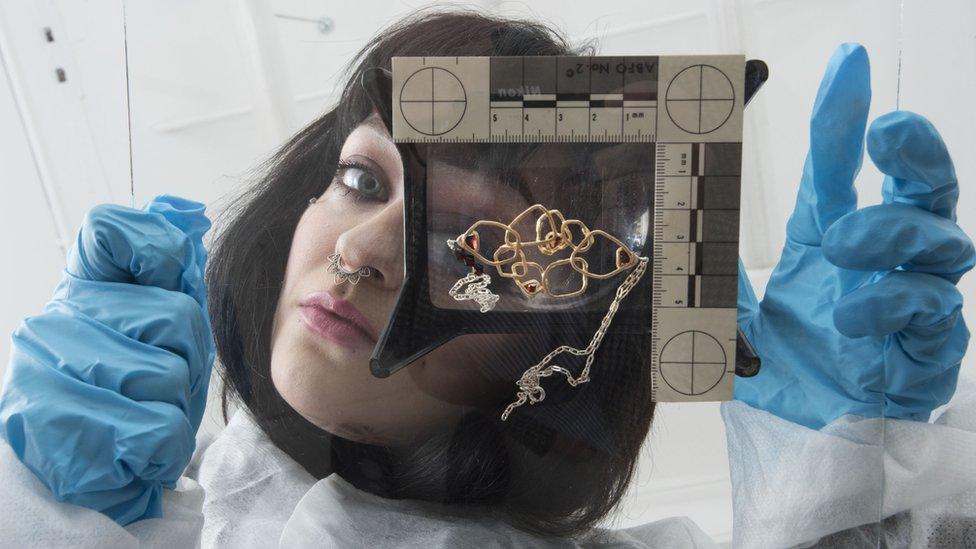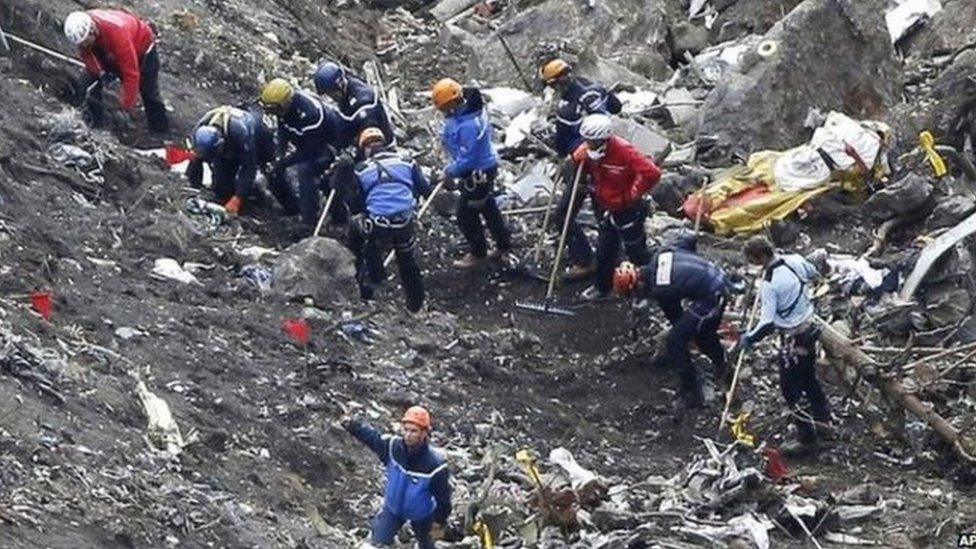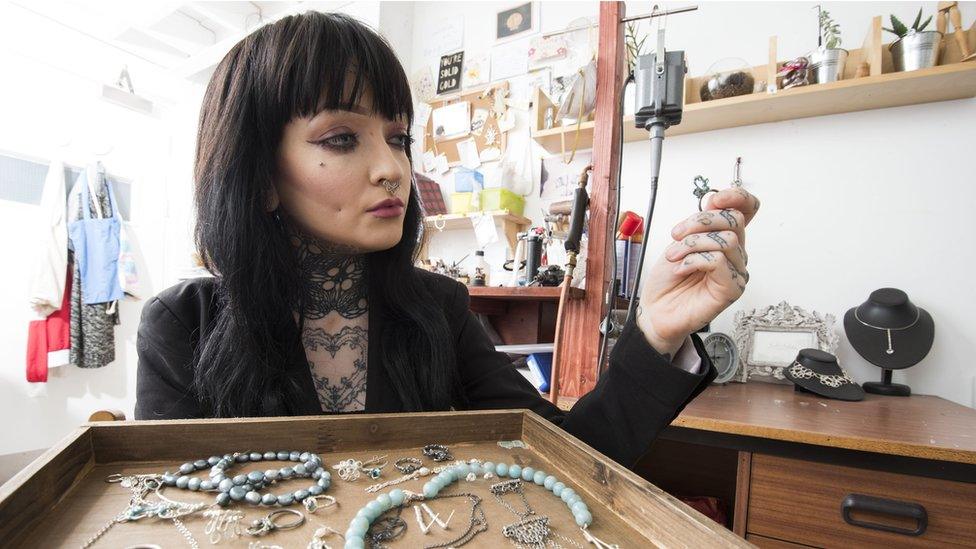Forensic jeweller unravels secrets of the dead
- Published

Maria Maclennan has assisted police forces who have recovered jewellery at crime scenes
The grim task of forensic science and the glamour of jewellery may seem worlds apart. But for Maria Maclennan, the world's first forensic jeweller, the pair can be a perfect match in unravelling the secrets of the dead.
Ms Maclennan, 27, a Dundee PhD student, has spent the past five years helping investigators identify victims by studying jewellery found at crime scenes or disaster sites.
These include the Germanwings crash site in the French Alps in March last year and the Mozambican airliner which crashed in Namibia in 2013.
Ms Maclennan, who grew up in Muir of Ord, will complete her four-year PhD project in forensic jewellery at Dundee's Duncan of Jordanstone College of Art and Design in October.
She said: "What seemingly might be two quite opposite fields are not as distant as one might think.

The 2015 Germanwings air disaster is one of the tragedies Ms Maclennan was consulted on
"They involve experts with training looking at real detail that other untrained eyes might miss and looking at them in a way we can glean information about an individual and perhaps their life and family.
"Jewellers have been intrigued for centuries by the notion of identity in the human body and why people wear jewellery and its symbolic nature and traditions."
Vital clues
After studying jewellery at art college, Ms Maclennan worked with designers, forensic anthropologists and police officers during her Masters degree on a project at Dundee University's renowned Centre for Anatomy and Human Identification.
This involved working on a jewellery database classification system to assist victims' families trying to describe individual items.
Ms Maclennan said: "It opened up jewellery and human identity in a way I hadn't thought about.
"I took elements of that research forward into a PHD proposal.
"I just got really fascinated with the research and felt that we'd maybe been missing a trick, that these two disciplines had not really spoken."
Jewellery can withstand high-impact, extreme-temperature environments associated with disasters such as plane crashes, leaving vital clues for investigators.
Ms Maclennan said: "I was deployed over the last couple of years for various mass fatalities, mainly aviation crashes but also building collapses.

Ms Maclennan said microscopic details can yield clues for investigators
"One of the companies I work with on a freelance basis is a disaster response company, so I'm part of a database of experts.
"Certainly through the contacts I've made and the people I've worked with, I now know that there's a need for the research."
'Microscopic level'
Closer to home, Ms Maclennan has also been contacted by murder investigators who have found jewellery at a crime scene.
She said: "Particular engravings or personal inscriptions might have some clues as to who the owner was.
"Equally, there are a lot of genealogical markings, serial numbers and inscriptions that appear at microscopic level on gemstones and watches.
"When they are brought in to be repaired, all these little marks all link, in some way, the jewellery to a particular location.
"Some of the research was on hallmarks and how they might be able to narrow down where an item was made and who made it."
Ms Maclennan will give a talk on forensic jewellery at the Dundee International Design Festival on 28 May.
She said: "It seemed to me there was a lot of knowledge in the jewellery industry that might be of benefit in the forensic context that perhaps wasn't being tapped into.
"I'm always very open with people and say it's a very exploratory and new field and I'm using the PhD to explore the potential and try and create a basis for further research.
"I think coining the phrase "forensic jeweller" really did help in engaging the scientific and design communities and how they responded to the idea of these two fields working together."